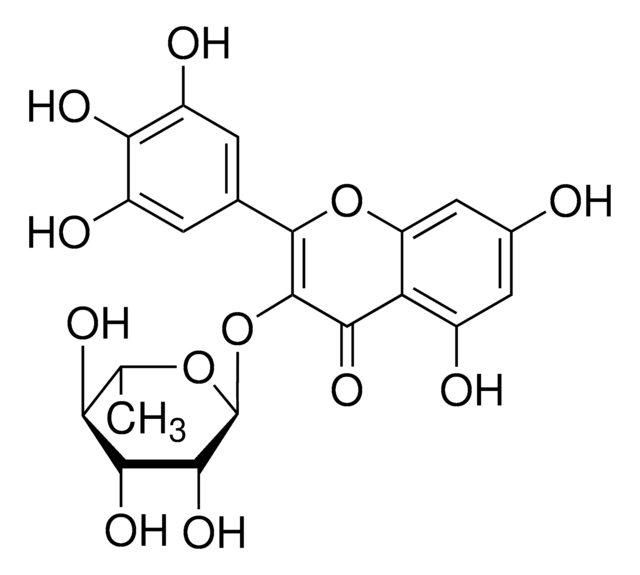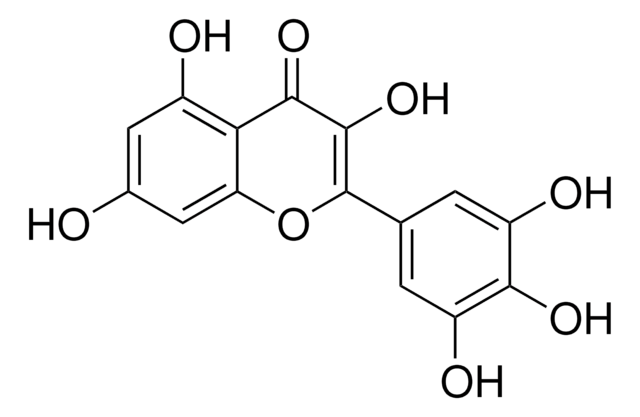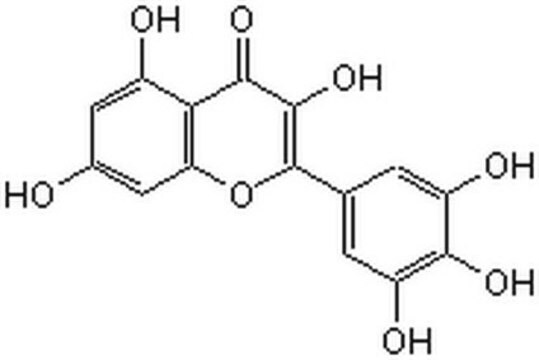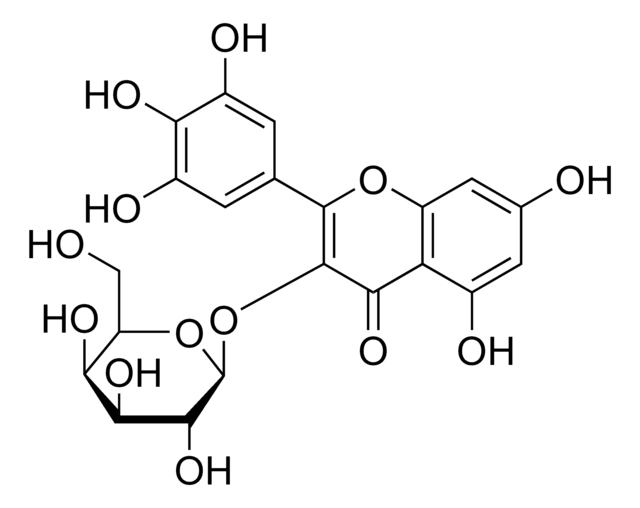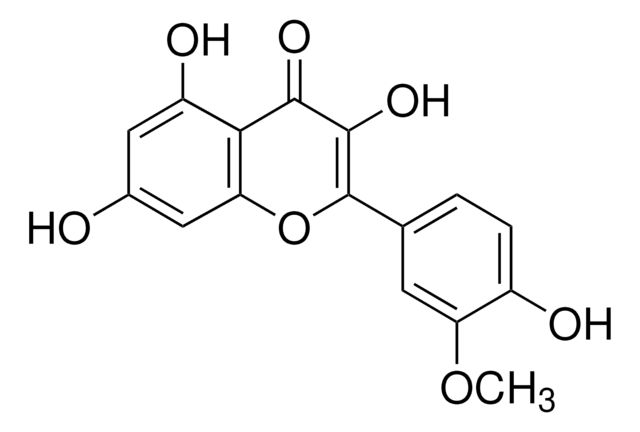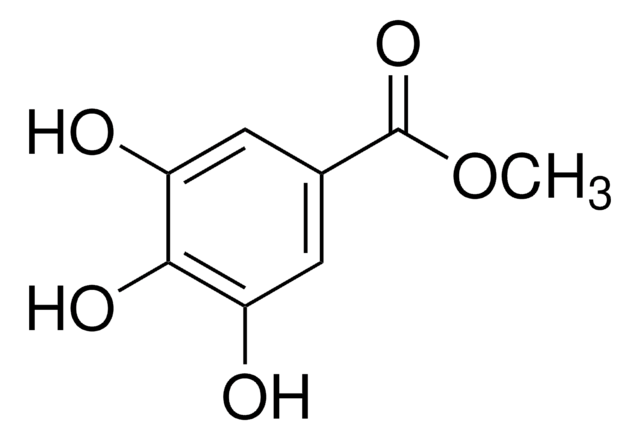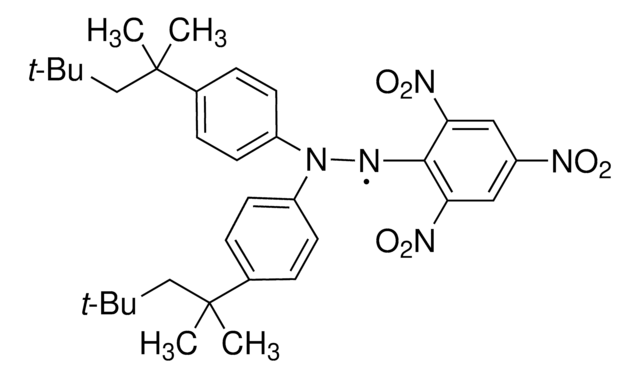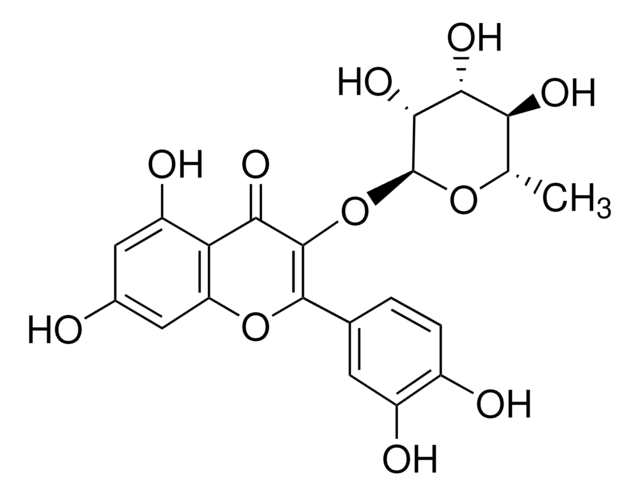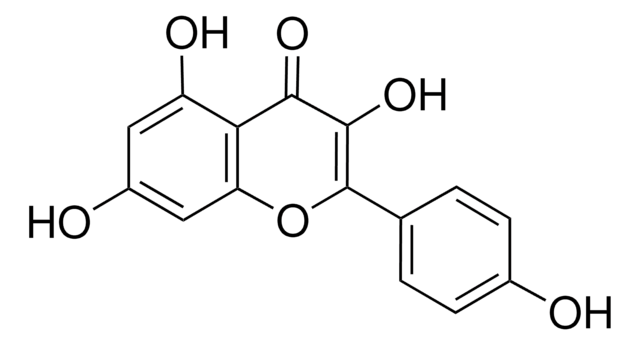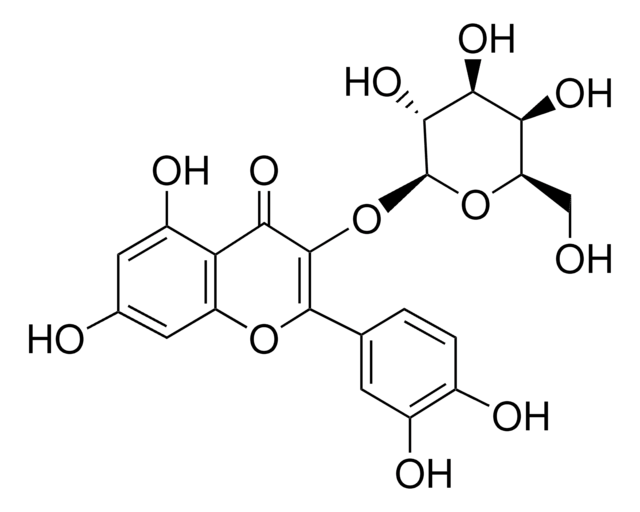Kluczowe dokumenty
91255
Myricitrin
≥99.0% (HPLC)
Synonim(y):
3,3′,4′,5,5′,7-Hexahydroxyflavone 3-O-rhamnoside, Myricetin 3-O-α-L-rhamnopyranoside, Myricetin 3-O-rhamnoside, Myricitroside
About This Item
Polecane produkty
Poziom jakości
Próba
≥99.0% (HPLC)
Formularz
powder
metody
HPLC: suitable
kolor
light yellow
temp. przechowywania
2-8°C
ciąg SMILES
C[C@@H]1O[C@@H](OC2=C(Oc3cc(O)cc(O)c3C2=O)c4cc(O)c(O)c(O)c4)[C@H](O)[C@H](O)[C@H]1O
InChI
1S/C21H20O12/c1-6-14(26)17(29)18(30)21(31-6)33-20-16(28)13-9(23)4-8(22)5-12(13)32-19(20)7-2-10(24)15(27)11(25)3-7/h2-6,14,17-18,21-27,29-30H,1H3/t6-,14-,17+,18+,21-/m0/s1
Klucz InChI
DCYOADKBABEMIQ-OWMUPTOHSA-N
Szukasz podobnych produktów? Odwiedź Przewodnik dotyczący porównywania produktów
Działania biochem./fizjol.
Opakowanie
Inne uwagi
Kod klasy składowania
11 - Combustible Solids
Klasa zagrożenia wodnego (WGK)
WGK 3
Temperatura zapłonu (°F)
Not applicable
Temperatura zapłonu (°C)
Not applicable
Wybierz jedną z najnowszych wersji:
Masz już ten produkt?
Dokumenty związane z niedawno zakupionymi produktami zostały zamieszczone w Bibliotece dokumentów.
Klienci oglądali również te produkty
Nasz zespół naukowców ma doświadczenie we wszystkich obszarach badań, w tym w naukach przyrodniczych, materiałoznawstwie, syntezie chemicznej, chromatografii, analityce i wielu innych dziedzinach.
Skontaktuj się z zespołem ds. pomocy technicznej